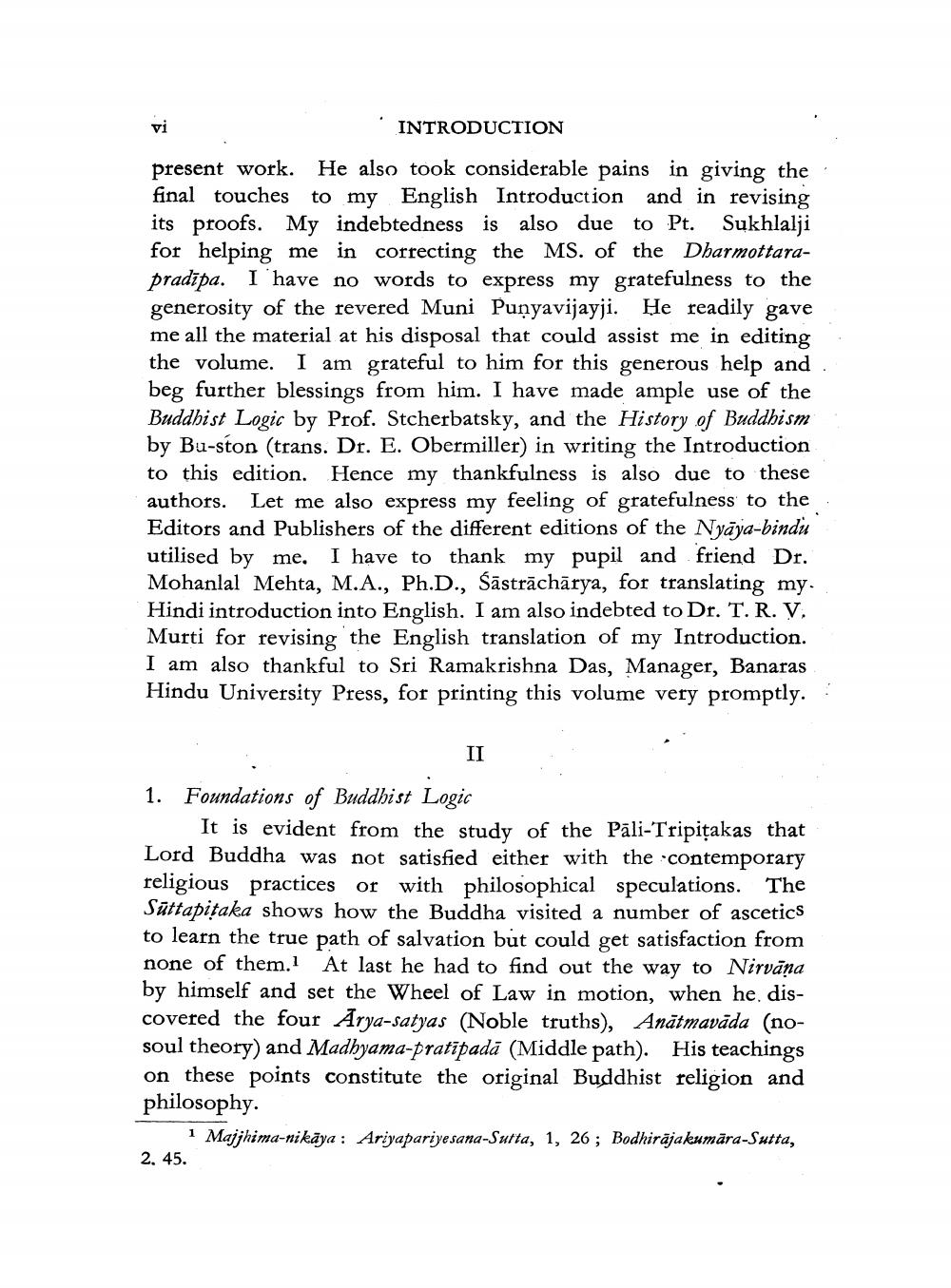________________ INTRODUCTION present work. He also took considerable pains in giving the final touches to my English Introduction and in revising its proofs. My indebtedness is also due to Pt. Sukhlalji for helping me in correcting the MS. of the Dharmottarapradipa. I have no words to express my gratefulness to the generosity of the revered Muni Punyavijayji. He readily gave me all the material at his disposal that could assist me in editing the volume. I am grateful to him for this generous help and. beg further blessings from him. I have made ample use of the Buddhist Logic by Prof. Stcherbatsky, and the History of Buddhism by Bu-ston (trans. Dr. E. Obermiller) in writing the Introduction to this edition. Hence my thankfulness is also due to these authors. Let me also express my feeling of gratefulness to the Editors and Publishers of the different editions of the Nyaya-bindu utilised by me. I have to thank my pupil and friend Dr. Mohanlal Mehta, M.A., Ph.D., Sastracharya, for translating my. Hindi introduction into English. I am also indebted to Dr. T.R. V. Murti for revising the English translation of my Introduction. I am also thankful to Sri Ramakrishna Das, Manager, Banaras Hindu University Press, for printing this volume very promptly. II 1. Foundations of Buddhist Logic It is evident from the study of the Pali-Tripitakas that Lord Buddha was not satisfied either with the contemporary religious practices or with philosophical speculations. The Suttapitaka shows how the Buddha visited a number of ascetics to learn the true path of salvation but could get satisfaction from none of them. At last he had to find out the way to Nirvana by himself and set the Wheel of Law in motion, when he discovered the four Arya-satyas (Noble truths), Anatmavada (nosoul theory) and Madhyama-pratipada (Middle path). His teachings on these points constitute the original Buddhist religion and philosophy. Majjhima-nikaya : Ariyapariye sana-Sutta, 1, 26; Bodhirajakumara-Sutta, 2. 45.




